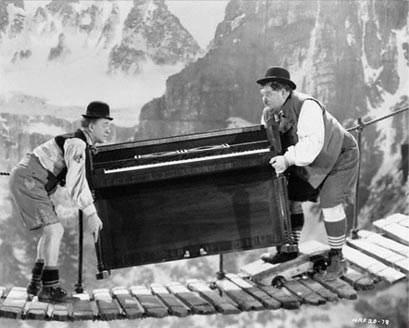
Website Speed is King
Consumers expect the Web to run at lightning speed. Your website, however, is running like it has a piano on its back—slow, sluggish and tired. Customers are leaving your site in droves as their patience wears thin—and your competitors are laughing as they leave you in a trail of dust.
Website Performance – It’s all about the End User Experience
The speed of your website is, at the end of the day, directly correlated to your customer’s experience. Just as a customer will stop going to a restaurant because of poor service—despite the fact that it offers quality food—if your site is too slow, it will ultimately cost you business. Consumers demand a speedy website and will not hesitate to move on should your website be too slow.
In fact, Google researchers have found that reducing the speed of search results just 4/10 of a second costs the Google search engine 8,000,000 hits per day. The research also claims that one in four people will abandon a website that takes more than four seconds to load.
What are a few causes of slow websites?

One of the leading causes of website latency can be attributed to the media that you place on your website. According to the HTTP Archive, more than 60% of the average website size is made up of images. Unoptimized images can create lag due to the heavy amount of bandwidth they consume. But, by re-sizing and lowering the image quality and removing unnecessary information such as EXIF data and ICC profiles, you can keep the media that you have through optimization. First, analyze what type of image you are using. If it is a PNG or a GIF file, it will require a reduction in the color palette. For a JPG image, reduce the size of the file in small increments until you notice a difference.
Video, for that matter, can also cause problems. If you embed video from someone else’s site the load time will depend on the source from which it originates. If the host page is slow your website will also lag behind. Just like your images, you will want to compress the video to optimize for the smallest size while maintaining the highest quality possible.
Is media the only culprit?
Media aside, it is important to focus on the database of your website as well. When your website is new, it will run fast due to the light load of information you are carrying. But as your website ages, and your memory and disc space begin to dwindle, your server speed can become an issue.
Tools to help your web performance
Website monitoring tools such as BrowserView establish a performance benchmark for your website, alerting you when a performance threshold is broken. When website performance is affected by specific elements on your page, a report is sent with detailed diagnostics that help pinpoint the root cause of the issue.
Run this free website speed test to see what your current website load time is from around the world and use it to the determine if bulky images are the main culprit to your current load times (select “details” for any specific agent location to view a comprehensive performance report including: 10% fastest and 10% slowest elements, detailed waterfall chart, host breakdown with individual load times, and a list of any on-page errors).
If you determine that unoptimized images are to blame, then checkout this list of the best image compression tools. We played around with several of these tools for our own blog and various websites. Our picks: JPEGmini for Mac, PUNYpng for a web-based tool, and Caesium for Windows (PNGGauntlet wins the most comprehensive Windows + Mac + Linux image compression solution).
Were bulky images to blame for your site’s slow speed? How did image compression help your site? Share your speed increase stats in the comment section below.

